LeBron James and Kevin Durant, one aged 39 and the other 35, have both surpassed the typical retirement age for NBA players. Yet, they remain top-tier superstars in today's NBA. As talented players at the same position with overlapping careers, it's inevitable that they are often compared. LeBron James is known for his versatility and longevity, considered a historical-level ball-handler, while Kevin Durant is a historical-level scoring machine capable of scoring against any opponent.
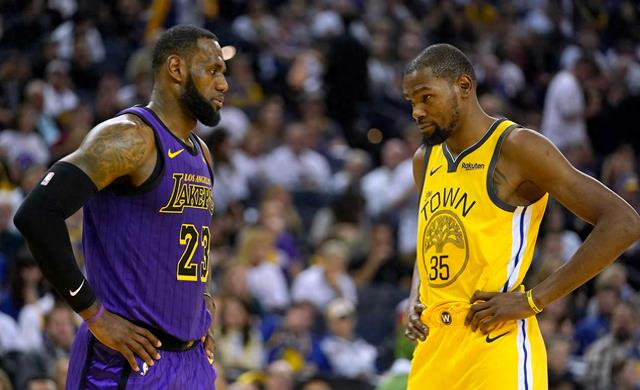
Both James and Durant are top small forwards, with James widely regarded by mainstream media as the greatest small forward in history. However, in terms of accolades, James has a significant lead over Durant, a gap that is almost impossible to close due to age, as Durant is also 35 years old and could easily find himself on the brink of retirement.

James and Durant both entered the NBA at 19, with James being the first overall pick and Durant the second. Both made an immediate impact and have maintained consistency throughout their careers. In their entire careers, Durant averages 27.3 points, 7 rebounds, and 4.4 assists per game, with a two-point shooting percentage of 54% and a three-point shooting percentage of 38.7%. James, on the other hand, averages 27.2 points, 7.5 rebounds, and 7.3 assists per game, with a two-point shooting percentage of 55.4% and a three-point shooting percentage of 34.6%.
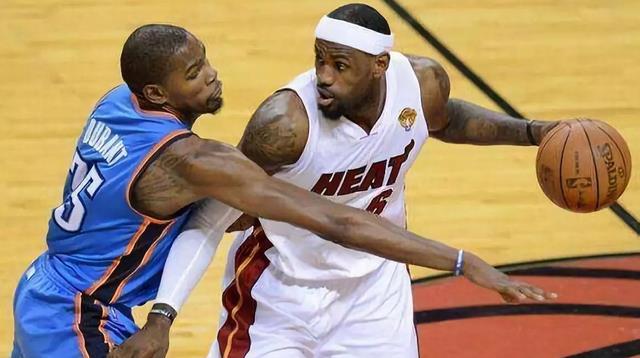
In total career statistics, Durant has played 1014 games with a total of 27728 points, 7134 rebounds, and 4436 assists. James, however, has played 1453 games with a total of 39452 points, 10902 rebounds, and 10658 assists.
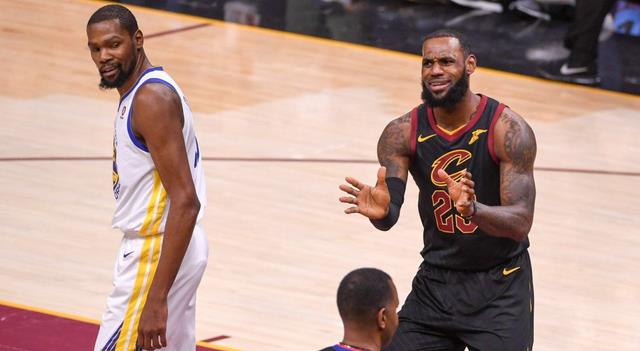
Throughout their careers, James and Durant have faced each other 38 times, including 24 regular season matchups and 14 in the finals. Although they are now both in the Western Conference, the number of these matchups is unlikely to increase significantly, as they have only faced each other five times in the last five years, with injuries and age being the biggest obstacles to their on-court competition.
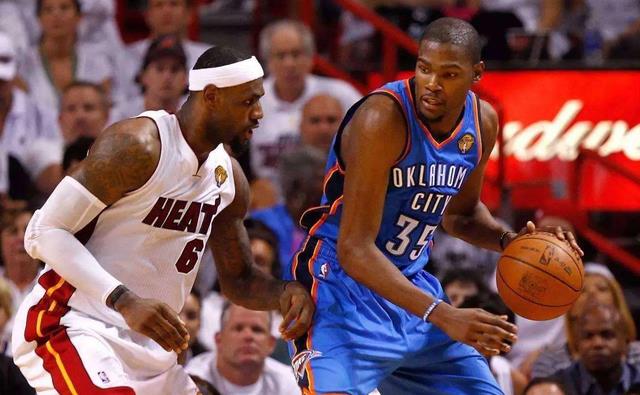
In 24 regular season matchups, James has a record of 18 wins and 6 losses, averaging 28 points, 7.5 rebounds, and 6.8 assists per game, with a two-point shooting percentage of 56.5% and a three-point shooting percentage of 36.8%. Durant, meanwhile, averages 29.4 points, 7 rebounds, and 4 assists per game, with a two-point shooting percentage of 51.7% and a three-point shooting percentage of 42.2%. James has a significant lead in regular season records over Durant, but in terms of data, both have their strengths, with James being more versatile and Durant having higher scoring and long-range shooting accuracy.
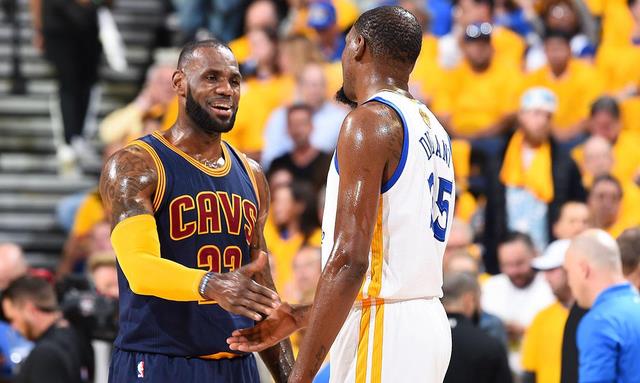
However, regular season matchups are not continuous and are affected by many factors, such as the large differences in scheduling arrangements, which may include consecutive courses and player rest. The playoffs are different, with scheduling arrangements being relatively fair aside from unpredictable factors like injuries. Both teams play three home and three away games in the first six matches, with identical rest times, and as a series, they can make timely adjustments, engage in direct competition, and determine the outcome without regard for life or death.
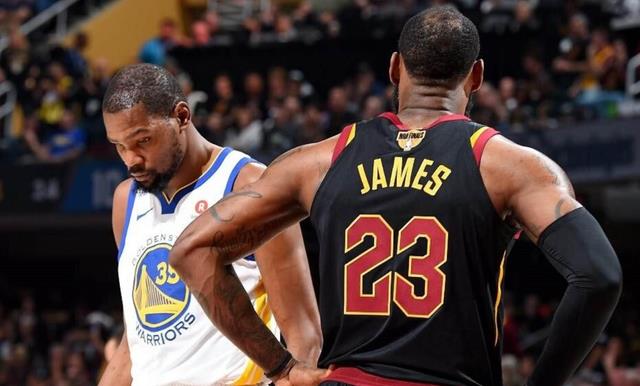
James and Durant have faced each other 14 times in the playoffs, all in the finals, with James winning 5 and losing 9, securing one championship title, and Durant winning 9 and losing 5, securing two championships.
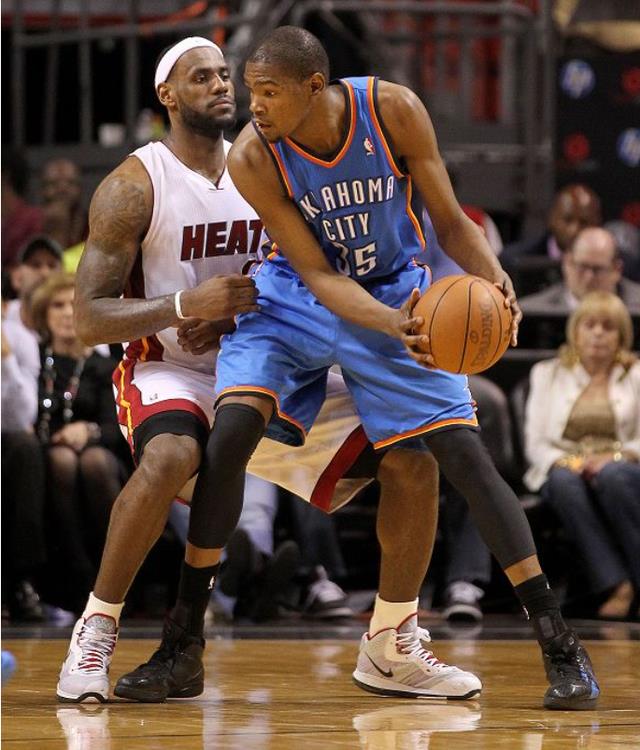
In terms of data, James averages 31.9 points, 10.4 rebounds, and 9.1 assists per game, with a two-point shooting percentage of 57.3% and a three-point shooting percentage of 32.3%. Durant averages 31.7 points, 8.1 rebounds, and 4.9 assists per game, with a two-point shooting percentage of 60% and a three-point shooting percentage of 43%. It can be seen that James is more versatile, while Durant is more efficient.
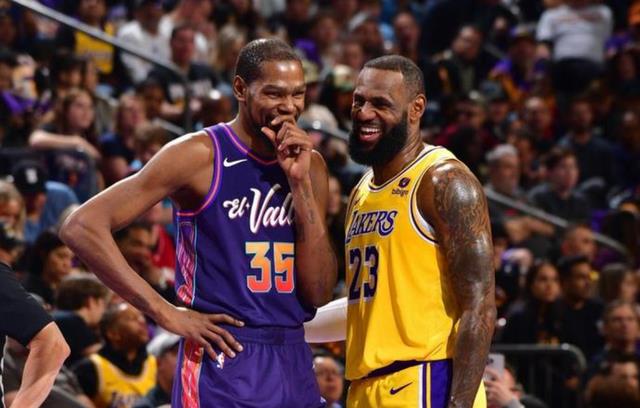
More specifically, James and Durant have faced each other in three series. First was in 2012, when the Miami Heat's Big Three of James, Wade, and Bosh faced off against the Oklahoma City Thunder's young trio of Durant, Westbrook, and Harden. In that series, James was 28 and Durant was 24. James averaged 28.6 points, 10.2 rebounds, and 7.4 assists per game, with a shooting percentage of 47.2% and a three-point shooting percentage of 18.8%. Durant, on the other hand, averaged 30.6 points, 6 rebounds, and 2.2 assists per game, with a shooting percentage of 54.8% and a three-point shooting percentage of 39.4%. James won the series and the Finals Most Valuable Player (FMVP) award, while the Thunder paid the price for their youth, with the trio disbanding due to salary issues.
In 2017, James was 33 and Durant was 29. James returned to the Cavaliers and formed a Big Three with Irving and Love, while Durant joined the Warriors and teamed up with Curry and Thompson to form a golden partnership. In that series, James averaged 33.6 points, 12 rebounds, and 10 assists per game, with a shooting percentage of 56.4% and a three-point shooting percentage of 38.7%. Durant averaged 35.2 points, 8.2 rebounds, and 5.4 assists per game, with a shooting percentage of 55.6% and a three-point shooting percentage of 47.4%. This was perhaps the most intense matchup between the two, with Durant joining the Warriors and facing potential ruin if he failed, so he was eager to prove himself. Meanwhile, James was aiming for his fourth championship, an essential step in his climb to the peak.
That year, both the Cavaliers and the Warriors had complete rosters, with no key players missing. Curry, Irving, Thompson, Love, JR, Green, and other players were all present. On paper, the teams were evenly matched, and the players' performances were generally normal. Curry averaged 26.8 points, 8 rebounds, and 9.4 assists per game, Irving averaged 29.4 points, 4 rebounds, and 4.4 assists per game, Thompson averaged 16.4 points and 4.8 rebounds per game, and Love averaged 16 points and 11 rebounds per game...
This pinnacle matchup ultimately ended in victory for Durant, who also achieved his first championship and FMVP award. However, this led to criticism from some domestic fans who labeled him a "traitor." This is inherently absurd, as the NBA is a commercial league, and Durant fulfilled his contract with the Thunder before choosing where he wanted to go. Similarly, the criticism of James for "team stacking" is also absurd. One cannot talk business and then set moral standards; as long as the players give their all during their time with the team, there is no distinction in worth.
Both James and Durant are great players, but they are not the same type of player. Different people have different preferences.
In 2018, it was the last playoff matchup between James and Durant. This time, James was 34 and Durant was 30. James averaged 34.5 points, 8.5 rebounds, and 10 assists per game, with a shooting percentage of 52.7% and a three-point shooting percentage of 33.3%. Durant averaged 28.8 points, 10.8 rebounds, and 7.5 assists per game, with a shooting percentage of 52.6% and a three-point shooting percentage of 40.9%.
In this matchup, the Cavaliers no longer had Irving, while the Warriors had almost the same lineup, with almost all players available. Therefore, the game was a one-sided trend, with the Warriors sweeping the Cavaliers 4-0. James was at his best, but Durant may not have been at his full potential.
From several finals matchups, we can see that James excels in versatility, while Durant is more adept at scoring. Both have their strengths, and with the right lineup, they can both reach the pinnacle.
In fact, just comparing the data, James and Durant are roughly equal. James is a ball-dominant player who needs the ball in his hands to maximize his potential, while Durant is plug-and-play, able to perform his scoring role in any team.
Now, James is already 39 years old, and Durant is 35. Both veterans are deserving of respect, having consistently played with dedication and contributed remarkable performances. We hope that in the final few years of their careers, they can maintain their health!